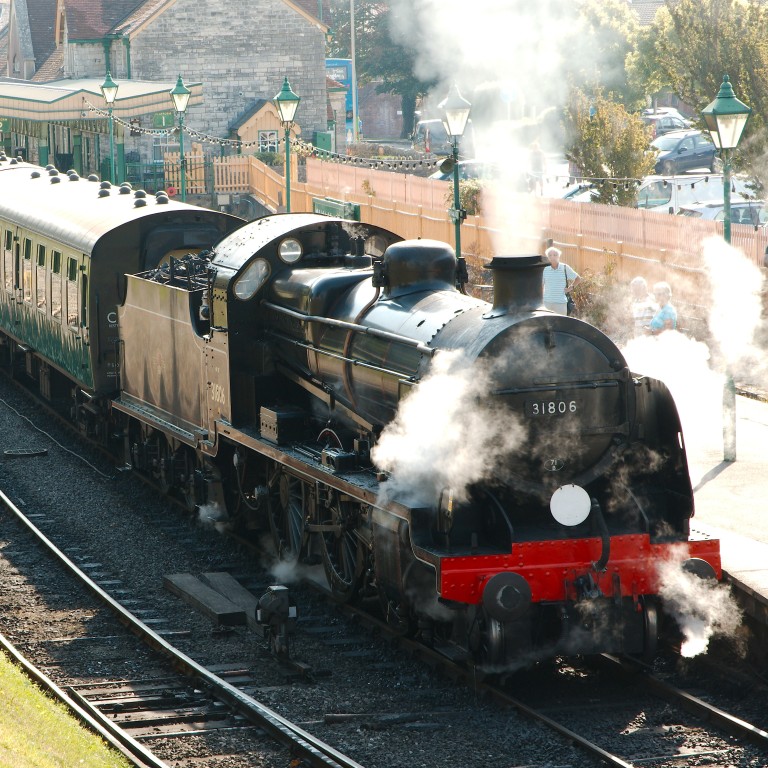
Your career plans may not yet include driving a steam train, but young people are needed to keep the industry alive
A Siemens rolling stock engineer volunteers as a driver, attracted by both the history and heritage, and the people from all walks of life who are involved
Nathan Au began volunteering on the Swanage railway at the age of 17. Ten years on, he is a fully fledged driver and he loves being at the controls of the great steam and diesel engines that trundle through the Dorset countryside.
“It’s lovely to work on these really elegant old heritage machines,” he said. “They’ve all got their quirks – even engines of the same class behave in different ways. You have to learn to know what they like and what they don’t want.”
Heritage railways across Britain attract millions of visitors and passengers a year but a shortage of young volunteer drivers such as Au is worrying the industry.
Ed Sheeran had a plan and stuck to it, manifesting his dream career
The Swanage railway in Dorset has 42 drivers. The oldest is 79 and the youngest is Au at 27. As the older ones step down from the footplate for the last time, there is a dearth of younger people ready to jump in. The shortage means the railway draws in people from far and wide: one driver comes from the east Midlands; another enthusiast travels all the way from Preston, in Lancashire.
“It’s a problem across the nation,” said Au, from Poole in Dorset. “The generation of British Rail drivers who worked on steam is going. The big challenge is to get young people interested in the preservation side of it.”
The career progression is the same as it was in the golden age of steam. “You start as a cleaner, getting to know the locomotives, the engine, the parts, the drivers. After a couple of years you may become a fireman and then eventually a driver. It’s very structured.”
The variety of the engines that Au drives through the Isle of Purbeck countryside is a thrill for him. The minimum number of shifts a driver has to do is 15 a year. When he was a student, Au did 80, and now he manages between 20 and 30. “The more time you put in, the faster you progress,” he said. His day job is also connected to the railways: he is a rolling stock engineer with Siemens.
There are two main attractions for Au – the locomotives and the people. “Everyone appreciates a steam engine, don’t they? I like the engineering side of it,” he said. “But the other half is the people.
“The railway is one big family. The beauty of it is that you have so many different jobs in one organisation – the drivers, the people in the booking office and in catering. You get to know people across other railways as well. I go to the Isle of Wight railway to lend a hand. It means you meet people from all walks of life.”
Making friends is a little different once you’ve left the safety net of high school – but we have some tips that can help
Beth Attfield-Haines, 29, a student veterinary nurse from Bournemouth, is another young volunteer at Swanage. “It’s my partner’s fault,” she said. “Ashley was a volunteer and then got a job there. It made sense for me to sign on as a volunteer too.”
She is currently working towards becoming a cleaner, the first rung on the ladder to the footplate. “I help out in the morning, getting the train prepped. It would be lovely to drive a train but I’m aware it takes some time.”
She added: “I do like a steam engine. When there’s a diesel gala on I’m not at all fussed but I love the steam galas. They evoke the old romance of travel – they’re really something to see.”
It is not all romance, however. Attfield-Haines’s favourite locomotive used to be Manston, an impressive Battle of Britain-class engine.
If you’re going to apply for work experience or an internship, you need to read this
“But the last time we went out on her she ended up burning Ash quite badly on his back, so I’m not quite so keen on her. It can be a hazardous job – they are fiery machines.”
And modern life is very busy. Attfield-Haines’s veterinary work means she cannot put as much time into the railway as she would like. “When you have the time you can volunteer, but when something else comes along like a career it gets harder,” she said. “It’s a shame, you get so much out of it.”
This article was curated by Young Post. Better Life is the ultimate resource for enhancing your personal and professional life.

